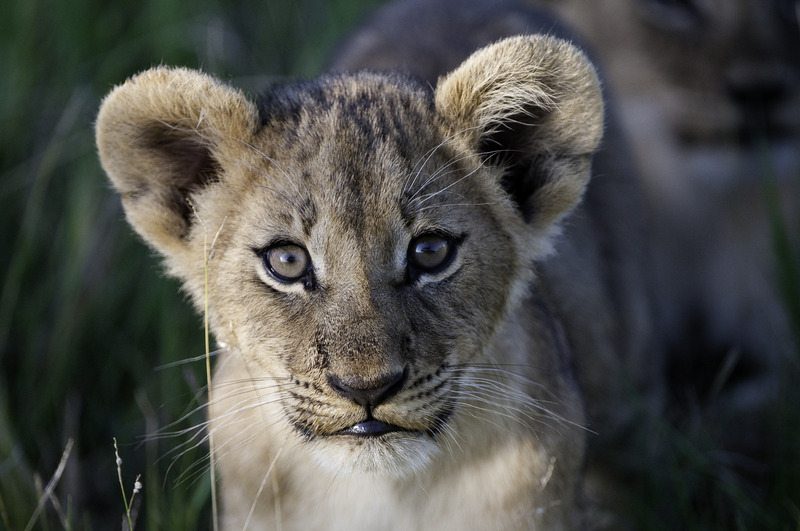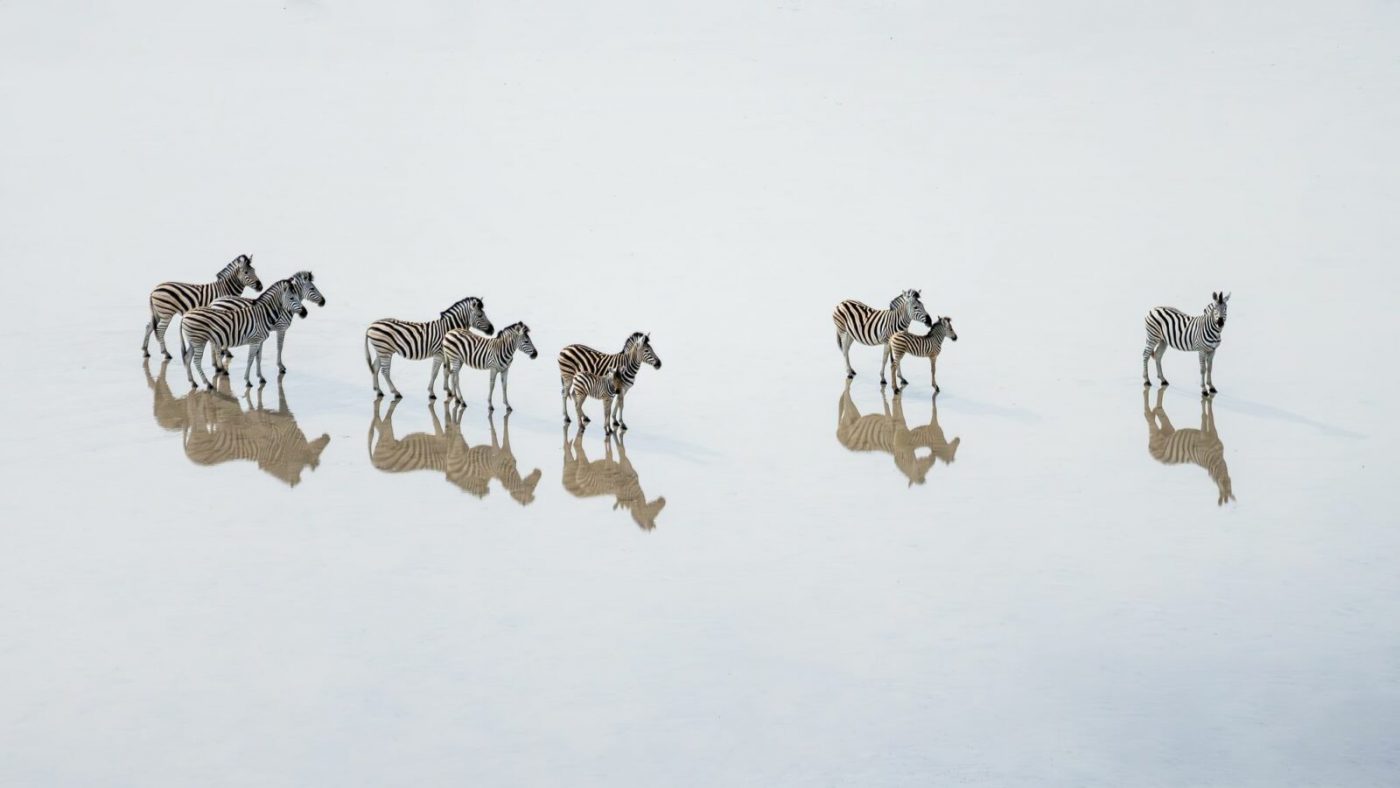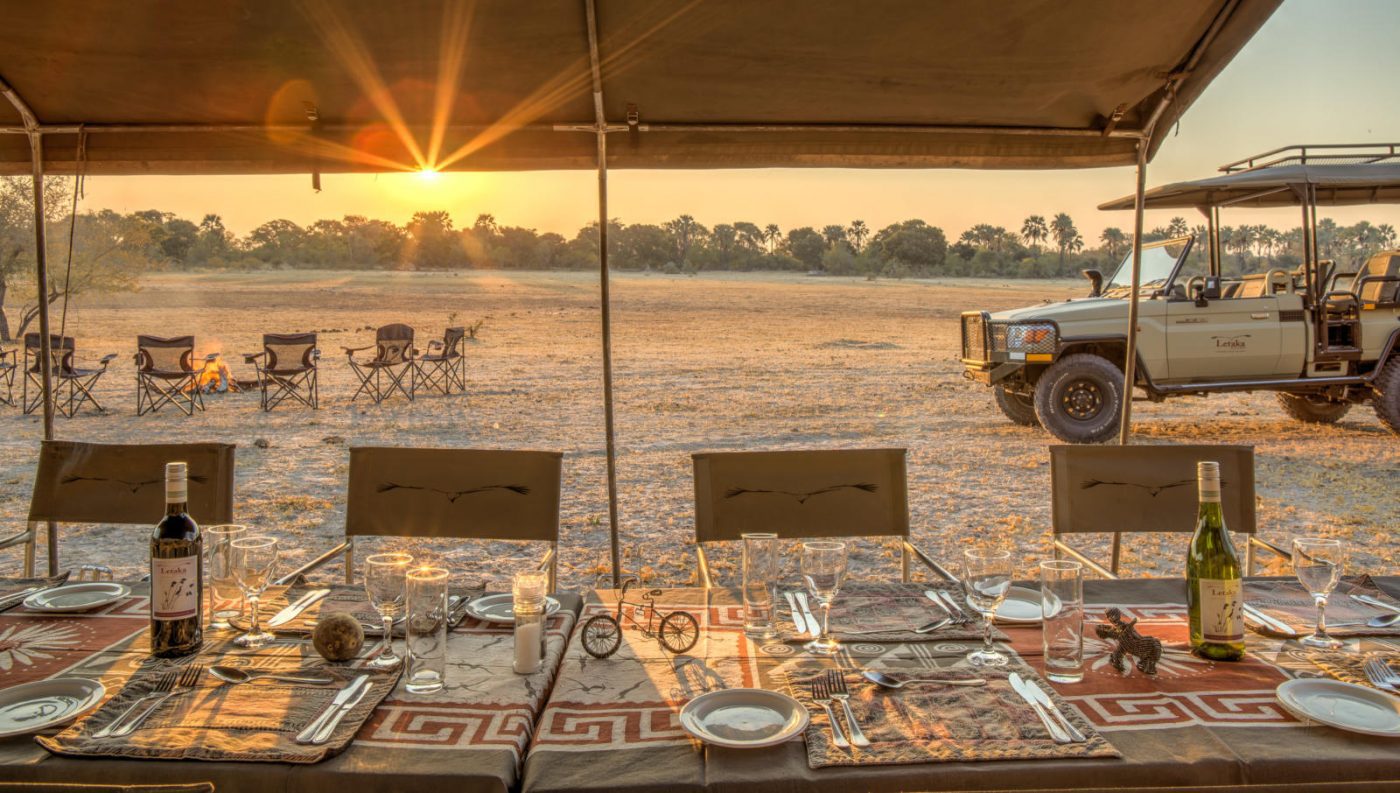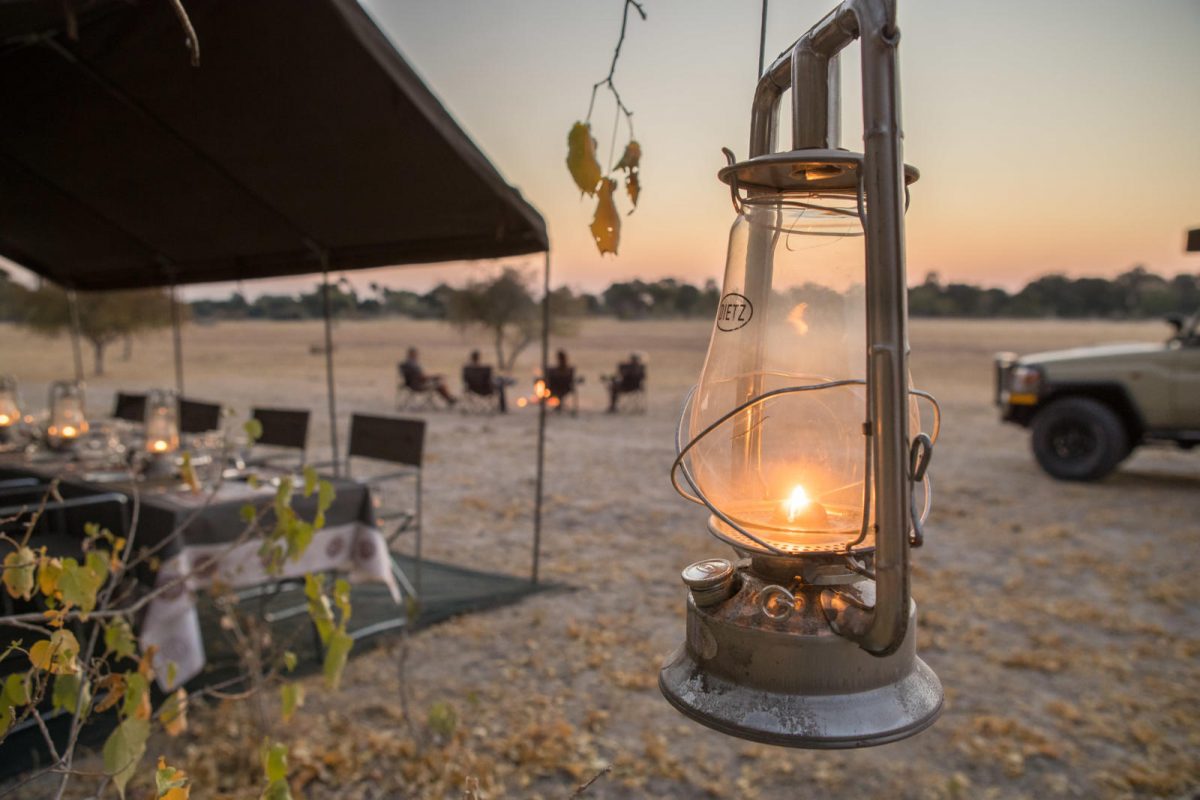
Charlie Summers Photographic Mobile Camping Safari – Botswana
10 Days | 9 Nights
$10,650 pp
Fully Serviced, All Inclusive Mobile Camping Photographic Safari
This safari offers a unique opportunity to work alongside a professional photographer with years of experience capturing the raw beauty of Botswana’s wilderness, complemented by expert guides who truly understand the art of lighting and positioning. This combination sets the experience apart from others.
Throughout your journey, you’ll dive into both the technical and creative aspects of wildlife photography, helping you master those classic shots. You’ll also explore advanced techniques such as panning, creative exposures, playing with light, capturing birds in flight, and observing animal behavior.
Regardless of your skill level—whether you’re a keen beginner with your first DSLR or an experienced photographer aiming to take your craft to the next level—you’ll leave with a deeper understanding of key elements like exposure, aperture, shutter speed, and more.
Every seat in the vehicle is a window seat, and we regularly rotate positions, ensuring everyone has the opportunity to capture a variety of perspectives. The safari is designed to help you maximize your camera’s potential, ensuring you leave with stunning shots from start to finish.
The safari caters for a maximum of 6 guests.
Highlights: Games Drives, Night Drives, Guided Walks, Boat Cruises, Photographic Tutor


Photographic Tour Activities – Include
Day Safaris, Night Game Drives, Mokoro Excursion, Walking Safaris, Bushman Painting & Boat Cruise
Daily Activities
Arrival and Charter Flight Information
Upon your arrival at Maun International Airport, you will be greeted by Mack Air for your charter flight at approximately 14:00 to the Xakanaxa airstrip in the Moremi Game Reserve. There, you will be met by your Guide and your Photographic Guide.
If you are staying in Maun prior to the safari, please arrange for an airport transfer. Mack Air will coordinate with your accommodation the day before to confirm the flight departure time.
Alternatively, if you are coming from one of the many safari lodges, you can book a direct flight to the Xakanaxa Airstrip with the lodge’s preferred charter company. However, we kindly request that these flights arrive no earlier than 12:00, to allow our guide to be there to meet you.
The first three nights of your safari will be spent in the Xakanaxa region, where we will explore the surrounding wilderness on morning and afternoon game drive excursions.
Wildlife Viewing: From the air, only the larger animals are easily visible. You’ll spot vast herds of African elephants, especially the breeding herds that roam the mopane scrub. On the open plains, look out for large herds of buffalo and lechwe, and in the waterways, pods of hippopotamuses are often seen.
Once you land in Xakanaxa and board your land cruiser, you’ll have the opportunity to discover the smaller game animals that are harder to spot from the air but are equally fascinating to observe.
Birding: A great day for raptors can be expected with African Hawk-Eagle, Gabar Goshawk, Shikra, Little Sparrowhawk, Dark Chanting Goshawk, Tawny Eagle, Lesser Spotted Eagle* and Steppe Eagle* all inhabiting the mopane and adjacent woodlands. Other birds common along this route includes most of Botswana’s hornbills including Red-billed, Southern Yellow-billed, African Grey, Bradfield’s and the Southern Ground Hornbills. A large number of Diederick Cuckoo*, Levaillant’s Cuckoo*, Jacobin Cuckoo*, Great-spotted Cuckoo*, African Cuckoo*, Common Cuckoo*, Shaft-tailed Whydah, Pintailed Whydah, Eastern Paradise Whydah, Greater Honeyguide, and Lesser Honeyguide can also be seen.
Moremi Game Reserve is such a jewel in the Okavango Delta! The variety of habitats in such a relatively small area is incredible. From floodplains and marshes to papyrus-fringed channels, the diversity of environments creates a rich tapestry of ecosystems that support an amazing array of wildlife and birdlife.
These different areas attract everything from large mammals like elephants, lions, and buffalo to countless bird species. The vast stands of Miscanthus and Phragmites create prime habitat for waterfowl and other species adapted to wetland environments. And then the woodland and savannah areas provide the perfect backdrop for raptors, antelope, and the more terrestrial creatures.
Wildlife: Moremi is amongst the best game reserves in Africa for viewing the endangered African wild dog. Xakanaxa is home to a resident herd of several hundred buffalo whose range covers the territories of at least 4 prides of lion which may often be seen flanking the ever moving herd. Breeding herds of elephant move between their browsing areas in the mopane forests and the fresh water of the Okavango. Red lechwe are one of the more unusual antelope species and commonly found here.
Birding: The swampy areas of Xakanaxa are home to African Rail, Coppery-tailed Coucal, Black Coucal*, Red-chested Flufftail, African Crake*, Black Crake, Chirping Cisticola, Luapula Cisticola, Purple Swamphen, Allen’s Gallinule to name but a few. The open waters attract African Skimmer, Saddle-billed Stork, Yellow-billed Stork, Intermediate Egret, Goliath Heron, African Fish Eagle as well as the globally threatened Slaty Egret and Wattled Crane.
Starting off with an early breakfast, followed by a leisurely drive through the Moremi Game Reserve northward toward Khawi and Mababe regions before embarking on a mokoro excursion in the tranquil back-waters of the Khwai and Mbudi channels.
Habitat: Our driving route follows the Manuchira Channel (Khwai River) a particularly scenic section of the drive, weaving through varied habitats from the riverside and floodplains to the mopane veld and woodlands. The journey between these different landscapes is sure to bring so many opportunities for wildlife sightings, whether it’s the vibrant birdlife, herds of elephants, or predators lurking in the grasslands. We pass the magnificent Dombo Hippo Pools in the morning stopping to enjoy the scenery and the antics of the resident hippo before game driving through Khwai to Mababe.
Wildlife: The south-east mopane veld is home to mostly breeding herds of elephant whilst the more northern reaches of Mababe is home to some impressive old bulls. The mature bulls revel in the cool waters of the Khwai River and are far more approachable while drinking and bathing than the breeding herds. The river has an unusually high density of hippo as well as some huge crocodile. Leopard- (western part of NG41), cheetah, serval and lion are common predators along this route and both Xakanaxa as well as Mababe are included in the home ranges of different packs of wild dog. General game includes southern giraffe, Burchell’s zebra, tsessebe and red lechwe with roan and sable antelope being less common residents
Birding: In the mopane woodlands African Hawk-Eagle, Tawny Eagle, Gabar Goshawk, Little Sparrowhawk, African Harrier Hawk and Shikra are common raptors. Mixed bird parties move through the canopy and include Red-headed Weaver, Stierling’s Wren-Warbler, Scarlet-chested Sunbird, Neddicky, Yellow-breasted Apalis, Chin-spot Batis, Diederik Cuckoo* to name but a few. The verges of the swamp form breeding grounds for the Rosy-Longclaw, Black Coucal*, Long-legged Bustard and the African Crake*
We spend the next two nights camping at our exclusive campsite in the Mababe concession. With a strict law of only 20 vehicles at anyone time we enjoy exploring the eastern Kalahari shrub, the river banks and Cathedral Mopane to the south in day and night game drives. Exploring after dark gives us the opportunity to spot nocturnal animals that are rarely encountered during the day.
We will also have the opportunity to explore the surrounding wilderness on foot (please note that this activity is seasonal based on rains and grass height, your guide will determine the safety of walking in Mababe) to enjoy an up close and personal encounter with Botswana’s flora and fauna. It is important to note that night drives and guided walks are not permitted within the national parks and reserves. These activities are conducted outside the boundaries of the Moremi Game Reserve in the Mababe Private Reserve.
Habitat: We spend our time between the dry-land habitats of the lead-wood and camel-thorn woodlands and savannahs and the riverside and marshy back-waters of the Khwai.
Wildlife: The Mababe region boasts excellent populations of both bull elephant as well as breeding herds. Lion, leopard, serval and African wildcat are common predators of the region with wild dog and cheetah being less common. Buffalo use this area seasonally with large herds moving in during the summer rains. The swampy areas in the west are home to red lechwe. Other ungulates include tsesebe, blue wildebeest, giraffe, kudu, sable antelope, roan antelope and impala.
Birding: Botswana’s national bird, the Kori Bustard, is a resident in the lower reaches of the Mababe Depression The western reaches are prime habitat for the uncommon Rosythroated Longclaw. The entire length of the river is hunting domain for the Bat-Hawk. Other interesting raptors here are Cuckoo Hawk (rare), Long-crested Eagle and Black Sparrowhawk. More commonly Tawny Eagle, Steppe Eagle*, Lesser-spotted Eagle*, Martial Eagle, Bateleur and African Hawk-Eagle. The waterways host Africa Rail, African Crake*, Greater Painted Snipe, Allen’s Gallinule*, Lesser Jacana and Lesser Moorhen*.
We head further north en-route to Chobe National Park, were we spend the following three nights camping in an exclusive wilderness campsite in the Central Chobe region, exploring
the desert-like landscape on game drives.
Habitat: A fascinating days drive looking at some of the evidence of the Paleo-Lake Makgadikgadi that dried up some ten thousand years ago. The most challenging part of the trip is crossing the Magwikwe Sand-ridge that formed the shoreline for this massive inland sea. The winding track through this deep sand makes for interesting travel in the early summer! The old lake bed is now the Mababe Depression. The dense clay floor of the depression result in high protein feed for wildlife and the area teams with game after the rains. During the rain season the depression is impassable due to the “cotton soil” and alternative routes must be used.
Wildlife: A day when anything could happen. The range of habitat that is covered encompasses most of the habitat types of northern Botswana. We pass through excellent lion country and some of the best cheetah country that our safari will cover. Elephant occur throughout the drive but are more common at the start and end of the drive where permanent surface water can be found.
Birding: The Mababe Depression is a birder’s paradise. The nutritious grasses that grow on the rich soils provide excellent seed for an impressive array of estrillids and viduids. Among these are the magnificently coloured Violet-eared Waxbill, Black-cheeked Waxbill, Village Indigobird, Shafttailed Whydah and Paradise Whydah. These in turn provide a good food source for small raptors such as the Little Sparrowhawk, Shikra, Gabar Goshawk, Red-necked Falcon and Lanner Falcon. It is not only the small birds that feed on the grass seeds, but rodents too. There are annual outbreaks of huge numbers of rats and mice. As a result huge numbers of Secretary Bird, Tawny Eagle, Black-shouldered Kite, Steppe Eagle*, Lesser-spotted Eagle*, Wahlberg’s Eagle* and Steppe Buzzard* can be found.
Habitat: Central Chobe is truly an iconic part of Africa, with volcanic rock outcrops rising above the Kalahari sands create a striking and rugged feature in the terrain, offering a unique environment for a different set of wildlife, plants, and birds. In contrast to the Savuti Marsh that has been the stage for many of wildlife documentaries. This open country has a rich ungulate population as well as lions and hyenas, setting the stage for some truly spectacular wildlife action. Central Chobe offers a varied landscape and the raw excitement of watching predators and prey interact. It offers a safari experience filled with both the stillness of nature and the potential thrill of the hunt.
And the dry Savuti Channel links many diverse environments, from the sand-veld to the hills, waterholes, and grasslands. You can almost feel the ebb and flow of life as the seasons change, and animals are drawn to this channel, whether it’s for water or crossing the terrain to find food.
Wildlife: The most exciting aspect of Savuti is the interaction between the elephants and the huge pride of resident lions, with numbers fluctuating from 20-30 cats. The mash is also home to cheetah and in the wet season wild dogs hunt these lands.
Birding: The birdlife in the Savuti Marsh is truly incredible, especially during the dry season when the area becomes a hotspot for thousands of doves and sandgrouse coming down to drink. The image of these flocks gathering at the waterholes in the early morning, with predators like Yellow-billed Kites, Tawny Eagles, and African Hawk-Eagles keeping a watchful eye from above, sounds like a dramatic spectacle. The presence of Red-crested Korhaan in the Kalahari Apple-leaf veld adds another level of intrigue.
On our final day on safari we will leave Central Chobe early to travel along the Chobe River arriving in Kasane where we will stop for a picnic lunch before taking an afternoon boat cruise to end the safari.
This is a ls long day so we recommend you spend several nights in Kasane or Victoria Falls. For those transferring to lodges in Kasane or across to
Zambia/Zimbabwe it is recommended that your transfer be organized to meet you at Kalahari Tours at 15h30.


